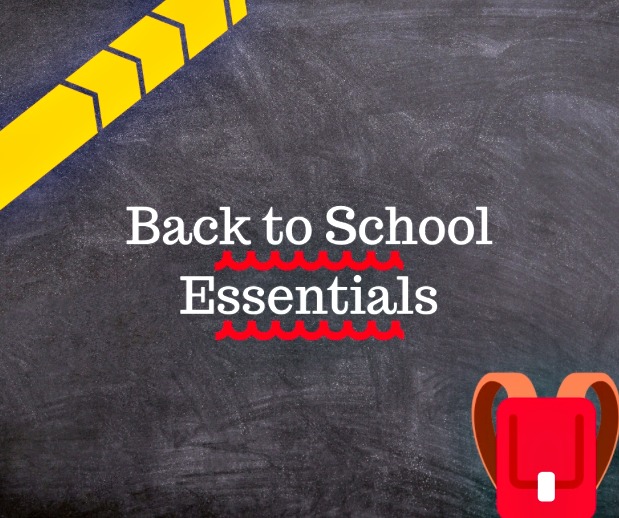Going back to school can be an exciting and anxious time for students. For younger students, this can mean school supply shopping with your parents and getting all those new custom binders and backpacks, but as you get older, it can look like knowing which classes to take to graduate and move on to the next level in life. I vividly remember in elementary and middle school going to WalMart and Target with my mom and brother for the “Back to School” sales to buy all our school supplies from the list provided to us. The school supply aisle was (and still is) my favorite section of any store. From the bright colors to the variety of options for lead pencils, pencil cases, and lunch boxes, I would spend no time finding all supplies in my favorite color with my favorite characters on them. My parents were the ones making these active decisions in my education and making sure that I was set up for success no matter where I was.
It wasn’t until I entered high school that “back to school” started to mean something different. I went to a predominantly white high school in San Francisco and had to adjust rather quickly to fit into the school culture. My parents didn’t necessarily prepare me for this culture shock, but thinking retroactively, I don’t think there was much they could’ve done except to push me to do the best I can despite who was in the classroom. During this time, I was the one mainly responsible for my educational decisions like choosing classes, making sure I had all the supplies I needed (a list of school supplies was no longer provided), and thinking of what to get involved in on campus. I was provided my own laptop and needed to rely on a syllabus of class assignments and required books. This was my first step into young adulthood, and I was the least prepared compared of many of my classmates. This is when the feelings of anxiety overrode excitement. I felt like I was stepping into new territory without a roadmap. High school was a place that I navigated on my own for the first year, but once I began making connections and asking for help of others around me, I became more comfortable with the systems and routines. While my high school experience was far from easy, it was worth having friends who were going through this journey with me.
High school prepared me more for college than my middle school had prepared me for high school. Similar to the my high school experience, I attended a predominantly white college in New York. While I felt more prepared this time around with the transition, there wasn’t anything that would prepare me for this level of change in my life. Again, feelings of anxiety and isolation were apparent, and because my parents didn’t know how to navigate the college system, I was on my own.
I was now in charge of my finances, living situation, educational track, career path and more. The stakes were much higher in college, and I knew that the moment I stepped on campus. My parents were physically there to help me move in, but the location change from California to New York was drastic, and the feeling of competition at an Ivy League was overbearing. This time, preparing for school meant that tuition was paid, a job on or near campus was secured to sustain myself financially, the deposit was paid for housing before moving in, flights were purchased in advance, and of course, class registration was complete. But what oftentimes got overlooked was my mental preparedness. College was a difficult place to navigate, particularly as a person of color and first-generation college student. There wasn’t a checklist for students like myself that made sure we were mentally prepared for a place like Columbia University. These are aspects of college that I, and many of friends in similar situations, learned the hard way. We relied on one another as support and motivation. We understood the common struggles we all faced on campus and made sure to always check in on one another all the time. When it came time for the summer’s end and to return back for the next years, my friends and I always checked in to see how we’re doing and if we were ready to face another semester. The journey would have been impossible without friends and staff on campus who made it a priority to reach out and see how I was doing. College was a tough place to be sometimes, but I’m grateful for my experiences and friends that kept me grounded and motivated to persist and graduate.
For students going back to school, this is both a tough and unpredictable time of the year, but one piece of advice to keep in your back pocket is to take care of yourself first. School is going to be a difficult place to get through if you’re not mentally prepared for it. But also have fun and think outside the box and explore your interests. Expand your horizons, and do something you never thought about doing or studying. Enjoy the process and make sure to always have the support you need to keep going.
Ashley Terry
Latest posts by Ashley Terry (see all)
- El Entorno de la Escuela es Suya: Cómo Hice el Transición de la Escuela Secundaria a la Escuela Preparatoria - November 1, 2019
- Your School Environment is Yours: How I Made the Transition from Middle to High School - October 30, 2019
- Lo que Estudiantes y Padres Deben Saber Sobre la Transición de la Escuela Preparatoria a la Universidad - May 23, 2019
- What Students and Parents Need to Know About the Transition from High School to College - May 16, 2019
- #EducadoresSiempreAprendiendo: Cómo AB 705 Ayuda a los Estudiantes a Evitar Cursos de Recuperación Redundantes - January 4, 2019

